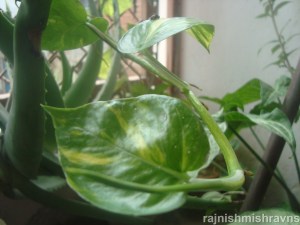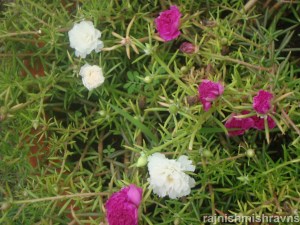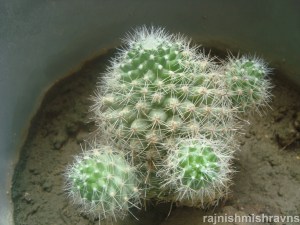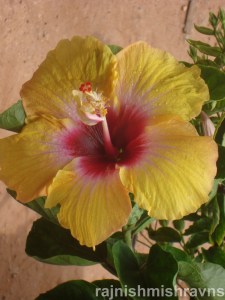Money Plant (Epipremnum aureum)
The first Money Plant I had seen in my house was planted in soil, in a pot, by my aunt. Apart from tulsi (Ocimum sanctum) it was the oldest surviving species in our house. I remember the small old pot from where our money plant spread to the empty saline bottles filled with tap water. It used to be the only indoor species present in many drawing rooms a couple of decades ago. It was kept with roots dipped in water, and mostly people used to forget to change the water regularly. It dried and died due to lack of nutrients and its stalk submerged in water used to rot and smell really bad.
I still remember my surprise at seeing the very broad leafed and thick stalked variety growing in Banaras Hindu University campus. It had a very long stalk that rose more than ten metres on to the stem of a palm tree. The leaves were broader than my palm and dew drops glistened on them. The roots had become thick after penetrating the outer layers of the tree’s stem and held it in a vice like grip. After that I located such huge leaves at many places.
Nine O’clock (Portulaca grandiflora)
The nine o’clock has been one of my all time favourites because of the fluffy look and because of its attractive colour. My first exposure was to the pink variety in the image above and for me they always come to my mind with the word 9 o’clock. I saw the flowers of other colours and petal density later, even the white ones. The most interesting thing about these flowers used to be their punctual opening and closing schedule. It does bloom at nine, as far as I remember.
Plumeria sp.
No, we never had Plumeria at home because it was too big for pots there. It was in Kali Bari that I had first seen it. Its flowers spread on the ground under the tree, their fragrance enveloping the senses for a radius of a few metres from the tree: it had an ever lasting impact on my olfactory glands. I put its fragrance only marginally below that of the burning petrol/kerosene oil in its power to generate addictiveness.
The Globe Cactus (Thelocactus species)
Remember the pot full of the globes that I had posted on this blog in the first post of the series with “Globes”? Well, this one is a direct descendant of the same globe conglomerate. Our neighbour since we moved into five by sixty one, Rajesh, had allowed us to keep our cactus at his place while we were leaving. The last time, when my brother had gone to the city, he brought a small globe-let back from Kasi. He carried it in an empty coconut shell in which some soil was filled. We planted it in a pot at my new place. The small globe took roots and grew in girth. With time, it sprouted other globes.

This work is licensed under a Creative Commons Attribution-NonCommercial-NoDerivs 3.0 Unported License.








